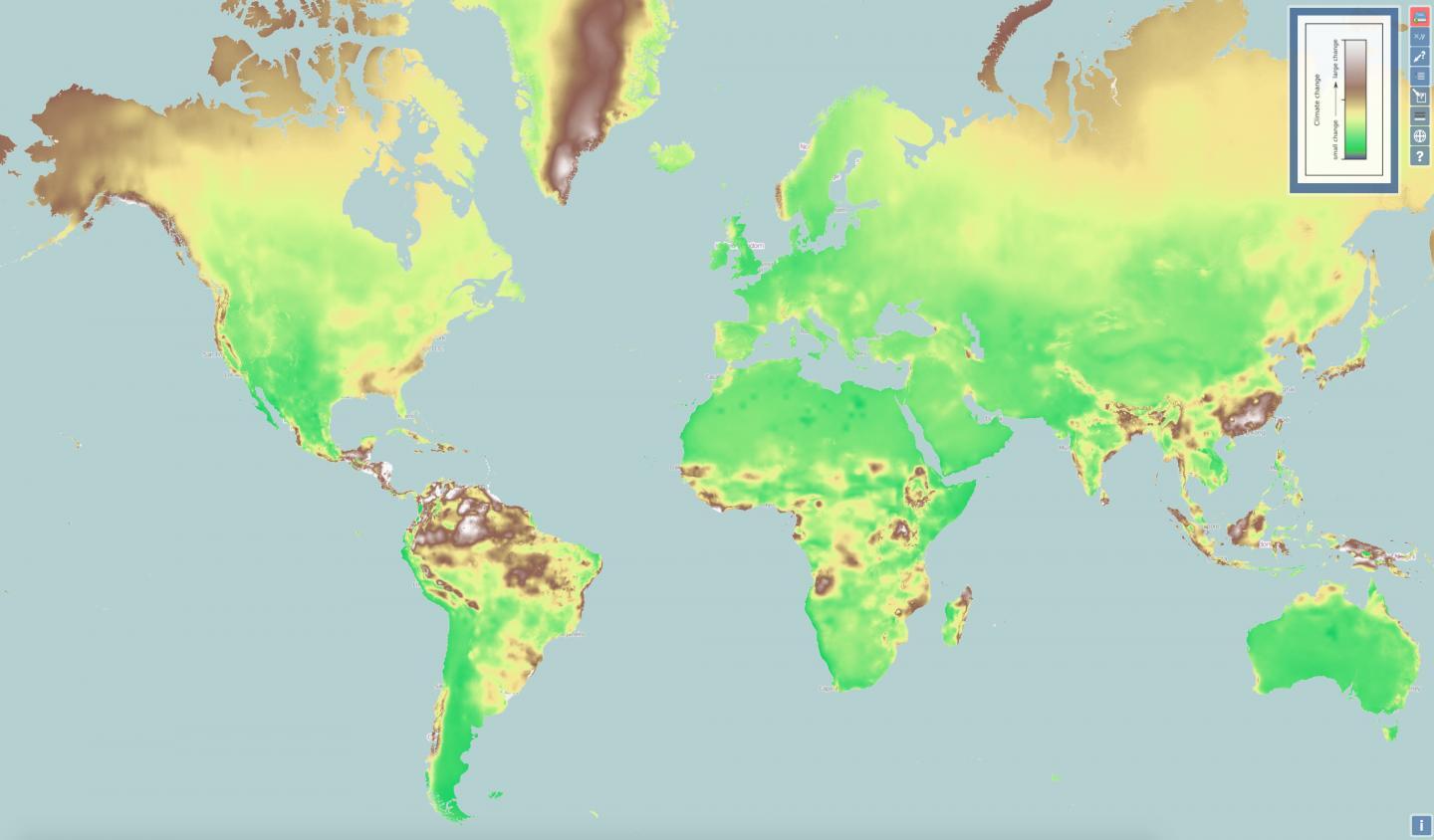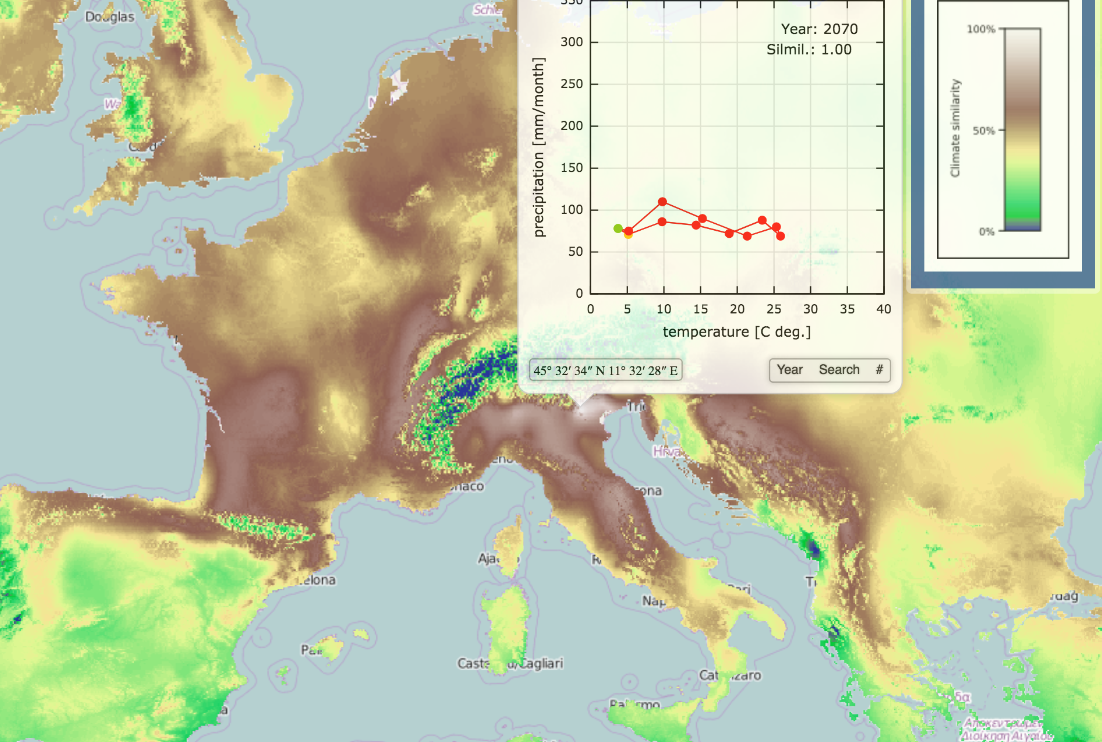A new interactive online map highlights the places which could be hardest hit by climate change in the future. The map is accessible to anyone with an internet connection and can be used to compare climates of different locations around the world. Its creators say it could help predict places where extreme weather events like tornadoes could happen in the future, even if there haven't been many in the past.
The map is called ClimateEx, and it is based on around 50 years of weather data from 50,000 weather stations around the world. It also uses projected data as far forward as the year 2070. Both the historic and future data comes from the WorldClim database of global climate data.

This data is laid over a grid 4 sq km (1.5 sq miles) in size, which can be panned and zoomed to find locations of interest. Though not all that easy to use, the map lets viewers compare the climates of different places, using colour to show similar areas. It reports both temperature and precipitation, and lets viewers see which parts of the world have been most seriously affected by climate change over time, and which are likely to be in the future. Historically, these areas include the Arctic, and regions near to the equator where rainfall has varied significantly.
"The map demonstrates climate change over time but also climate diversity. The concept is powerful and can inspire a lot of research," says Tomasz Stepinski, a geography professor at the University of Cincinnati and the creator of the map. "When people think about climate change, they think about temperature: global warming. But climate has many components, including precipitation. People often consider temperature and precipitation separately. But our mathematical model includes both."
Researcher Pawel Netzel, who worked with Stepinski on the project, thinks it could have a role in strategic planning. "It helps to prepare for emerging threats such as increasing the frequency or appearance of extreme weather phenomena," he says. "Knowledge about the possibility of hazards will give city planners time to prepare appropriate response plans."

Stepinski also hopes the map could be useful to people planning vacations or moving home, but he's very serious on the subject of climate change. "The climate is always changing," he explains. "But it usually changes on a geological timescale. It's not surprising that the climate today is different from the climate a half-million years ago. But now we're experiencing changes on a scale of 100 years. That's a completely different thing.
"If you were looking at climate change at a scale of a million years, you wouldn't worry too much," he adds. "But if you see dramatic changes on the order of a few decades, it's a big problem. Personally I'm not happy there are people who seem to disregard this as not much of a problem. It is a problem."
The pair's work appears in this month's Bulletin of the American Meteorological Society. You can view the map on the University of Cincinnati website.
Source: The University of Cincinnati







